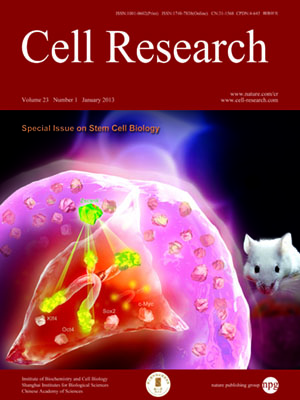
Volume 23, No 1, Jan 2013
ISSN: 1001-0602
EISSN: 1748-7838 2018
impact factor 17.848*
(Clarivate Analytics, 2019)
Volume 23 Issue 1, January 2013: 49-69
REVIEWS
Embryonic stem cell and induced pluripotent stem cell: an epigenetic perspective
Gaoyang Liang1,2,3 and Yi Zhang1,2,3,4,5
1Howard Hughes Medical Institute, Harvard Medical School, WAB-149G, 200 Longwood Avenue, Boston, MA 02115, USA
2Program in Cellular and Molecular Medicine, Boston Children's Hospital, Harvard Medical School, WAB-149G, 200 Longwood Avenue, Boston, MA 02115, USA
3Department of Genetics, Harvard Medical School, WAB-149G, 200 Longwood Avenue, Boston, MA 02115, USA
4Department of Pediatrics, Harvard Medical School, WAB-149G, 200 Longwood Avenue, Boston, MA 02115, USA
5Harvard Stem Cell Institute, Harvard Medical School, WAB-149G, 200 Longwood Avenue, Boston, MA 02115, USA
Correspondence: Yi Zhang(yzhang@genetics.med.harvard.edu)
Pluripotent stem cells, like embryonic stem cells (ESCs), have specialized epigenetic landscapes, which are important for pluripotency maintenance. Transcription factor-mediated generation of induced pluripotent stem cells (iPSCs) requires global change of somatic cell epigenetic status into an ESC-like state. Accumulating evidence indicates that epigenetic mechanisms not only play important roles in the iPSC generation process, but also affect the properties of reprogrammed iPSCs. Understanding the roles of various epigenetic factors in iPSC generation contributes to our knowledge of the reprogramming mechanisms.
Cell Research (2013) 23:49-69. doi:10.1038/cr.2012.175; published online 18 December 2012
FULL TEXT | PDF
Browse 4530


